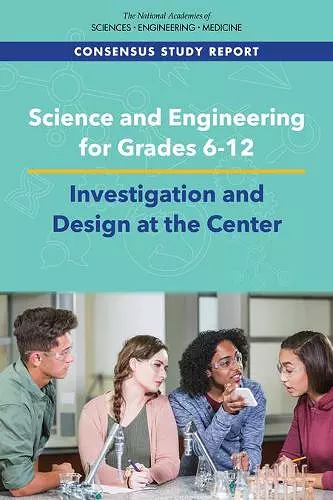Science and Engineering for Grades 6-12
Investigation and Design at the Center
Division of Behavioral and Social Sciences and Education author National Academy of Engineering author Board on Science Education author National Academies of Sciences, Engineering, and Medicine author Committee on Science Investigations and Engineering Design Experiences in Grades 6-12 author Kerry Brenner editor Nancy Songer editor Brett Moulding editor
Format:Paperback
Publisher:National Academies Press
Published:12th Mar '19
Should be back in stock very soon

It is essential for today's students to learn about science and engineering in order to make sense of the world around them and participate as informed members of a democratic society. The skills and ways of thinking that are developed and honed through engaging in scientific and engineering endeavors can be used to engage with evidence in making personal decisions, to participate responsibly in civic life, and to improve and maintain the health of the environment, as well as to prepare for careers that use science and technology.
The majority of Americans learn most of what they know about science and engineering as middle and high school students. During these years of rapid change for students' knowledge, attitudes, and interests, they can be engaged in learning science and engineering through schoolwork that piques their curiosity about the phenomena around them in ways that are relevant to their local surroundings and to their culture. Many decades of education research provide strong evidence for effective practices in teaching and learning of science and engineering. One of the effective practices that helps students learn is to engage in science investigation and engineering design. Broad implementation of science investigation and engineering design and other evidence-based practices in middle and high schools can help address present-day and future national challenges, including broadening access to science and engineering for communities who have traditionally been underrepresented and improving students' educational and life experiences.
Science and Engineering for Grades 6-12: Investigation and Design at the Center revisits America's Lab Report: Investigations in High School Science in order to consider its discussion of laboratory experiences and teacher and school readiness in an updated context. It considers how to engage today's middle and high school students in doing science and engineering through an analysis of evidence and examples. This report provides guidance for teachers, administrators, creators of instructional resources, and leaders in teacher professional learning on how to support students as they make sense of phenomena, gather and analyze data/information, construct explanations and design solutions, and communicate reasoning to self and others during science investigation and engineering design. It also provides guidance to help educators get started with designing, implementing, and assessing investigation and design.
Table of Contents- Front Matter
- Summary
- 1 Introduction
- 2 K12 Science Education Past and...
ISBN: 9780309482608
Dimensions: unknown
Weight: unknown
328 pages